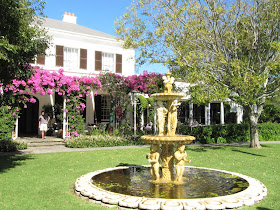I thank Prof. Fathi Habashi of Laval University, Canada, for providing this review of the proceedings of the symposium on rare earths held during the Conference of Metallurgists.
This Symposium provided a forum to discuss the critical issues generated since the mid-1980s when there was significant advancements in technology in the areas of renewable energy production, energy storage, hybrid vehicles, computers, smartphones, digital displays, or lasers all of which rely on materials made possible by the rare earth elements.
The book opens with an overview of the geology and economic significance of the rare earths sources plus two historical articles. It is interesting to note that while the rare earth metals were practically all discovered in Sweden, industrialization of these metals started in Austria. It so happened that a Swedish chemist went to the University of Heidelberg in Germany to analyze samples of rare earths minerals by the new method of spectral analysis invented by chemistry professor Robert Bunsen, most famous for the laboratory burner carrying his name. In the same period Carl Auer, a student from Austria, also went to Heidelberg to study chemistry. On his return to Vienna he carried with him the Swedish minerals for further study. It was there at the University of Vienna that he made his discovery of the gas mantel and the cigarette lighter and commercialised these products.
The other historical article is related to the Canadian rare earth recovery operations at Elliot Lake, Ontario using solvent extraction methods to recover the rare earths and thorium as by-products of uranium operations from about 1960 until 1990. Other papers in the book are grouped under the following topics:
- Extractive metallurgy [ 11 papers]
- Uranium and thorium management [ 2 papers]
- Environmental issues [1 paper]
- Separation and metal production [ 7 papers]
- Physical metallurgy [ 12 papers]
- Rare earth recycling [ 7 papers]
Rare Earths 2012 edited by J.R. Goode, G. Moldoveanu, ISBN: 978-1-926872-14-8, is published by Canadian Institute of Mining, Metallurgy and Petroleum.
We invite your comments on the book.
This Symposium provided a forum to discuss the critical issues generated since the mid-1980s when there was significant advancements in technology in the areas of renewable energy production, energy storage, hybrid vehicles, computers, smartphones, digital displays, or lasers all of which rely on materials made possible by the rare earth elements.
The book opens with an overview of the geology and economic significance of the rare earths sources plus two historical articles. It is interesting to note that while the rare earth metals were practically all discovered in Sweden, industrialization of these metals started in Austria. It so happened that a Swedish chemist went to the University of Heidelberg in Germany to analyze samples of rare earths minerals by the new method of spectral analysis invented by chemistry professor Robert Bunsen, most famous for the laboratory burner carrying his name. In the same period Carl Auer, a student from Austria, also went to Heidelberg to study chemistry. On his return to Vienna he carried with him the Swedish minerals for further study. It was there at the University of Vienna that he made his discovery of the gas mantel and the cigarette lighter and commercialised these products.
The other historical article is related to the Canadian rare earth recovery operations at Elliot Lake, Ontario using solvent extraction methods to recover the rare earths and thorium as by-products of uranium operations from about 1960 until 1990. Other papers in the book are grouped under the following topics:
- Extractive metallurgy [ 11 papers]
- Uranium and thorium management [ 2 papers]
- Environmental issues [1 paper]
- Separation and metal production [ 7 papers]
- Physical metallurgy [ 12 papers]
- Rare earth recycling [ 7 papers]
Rare Earths 2012 edited by J.R. Goode, G. Moldoveanu, ISBN: 978-1-926872-14-8, is published by Canadian Institute of Mining, Metallurgy and Petroleum.
We invite your comments on the book.






















